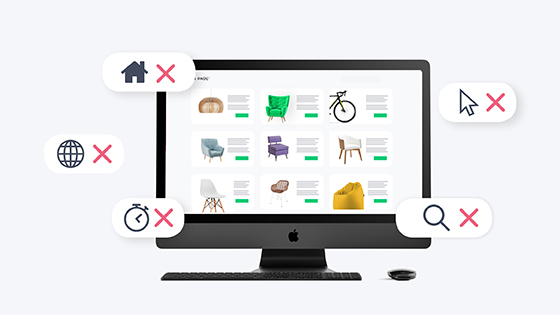10 mistakes not to make when evaluating a software PIM

How to choose the best PIM software for your business
If you believe that there are product information managementproblems in your company, but you don’t know on which basis to choose the right PIM softwarethat can help you, then this article could give you the right advice to guide you.
The choice of a software PIM, if on the one hand it is a great opportunity for the data manager, on the other it is a very delicate choice as it involves the following assessments:
- amount of users involved in content editing
- competence of the same
- role of the PIM in the plant and the resulting future prospects
- relationship with structured databases already available
- what outputs it should handle
- which digital or datapublishing it must produce
The choice of the rightProduct Information Management cannot come from a single area of the company, but involves aspects ofusability, technology,publication that must be evaluated jointly by several business areas: marketing, communication, R&D, IT and commercial.
1- Predominance of an area
One of the mistakes that often compromise the start-up of a PIM is the domination of one area over another. Drawing ideal and theoretical projects is one of the riskiest elements in the process selection of a PIM system.
It is not uncommon to meet ERP experts who propose to extend the role of PIM, theoretically acceptable, but impossible in reality, to management.
2- Very structured systems
If we want to guarantee a revolution in the management and distribution of product information, thePIM tool is for us.
Ease of adoption by a heterogeneous audience is the first guarantor of digital transformation that involves different areas and skills that are often not database experts.
4- Mobility
The Product information they are organic contents that can potentially change every day as a result of updates, technological developments and changing market needs. Being able to use product information, both in consultation and in writing, at any time and place guarantees a natural alignment of the same.
No more post-it notes, corrections, additions marked on the old catalog and then arrive at a moment in which we try to merge them all together to publish the new edition.
Choosing a PIM in the Cloud is the prerequisite for smart informationmanagement.
5- Proprietary software
Another aspect not to be overlooked for the longevity of a Product Information Management is the ability to access the source codefor integrations. This sharing availability will make it possible to implement reports from different specialists at different times, without being dependent on the software house.
On the other hand, the system must be able to adapt to user needs through configurations and not by interventions on the code. The user himself must be able to configure the structure of the DB and the functions for its use.
6- Too many features
The world of data management often leads to a thousandsatellite functions around the main ones, with the typical effect of complicating their use.
Considering that a PIM tool is often used by a heterogeneous and unskilled public, it is always convenient a very advanced and friendly tool in the functions that make up 80% of the value of the PIM, giving up sophisticated details does not limit the positive impact of the implementation of a PIM in the company.
7- Don’t manage languages
An aspect that often forces companies to equip themselves with aPIM software it is precisely the expansion of distribution. Each user would prefer to consult a catalog in his language, when we simplify the linguistic declension is only because we have not handled the information.
The print form is therefore a basic element in order not to force content editors to check only a sterile aggregate of information on a form.
8- Data only
Organize the data it does not have to be the only function of a PIM. Aggregating the various product data in a sheet to be printed is certainly the most ergonomic approach for an audience used to checking the individual pages of the catalog during publication.
It is therefore essential that your PIM integrates sentence control functions and related linguistic declensions, which already includes collectors with the main CAT tools and automatic translation software.
9- Roles and individual responsibilities
Often one one unstructured management of product information brings with it communication errors. In these processes, the authors interpret, copy and paste, and the latest update is often forgotten. The IMP must therefore have the ability to share information,
to assign roles and responsibilities, solving at the base all the elements that create tension within the company and often also externally when I distribute incorrect or updated information.
10- Communicate as before
Having a PIM and continuing to communicate product issues amongcollaborators with e-mails, prints or calls, leads to not resolvingthe distortionin communication, added to the fact that it must then be formalized, then written on the PIM.
A PIM must have natively integrated a TAG and chat function that starts directly from the source of the information being analyzed.
Other articles that
may interest you


